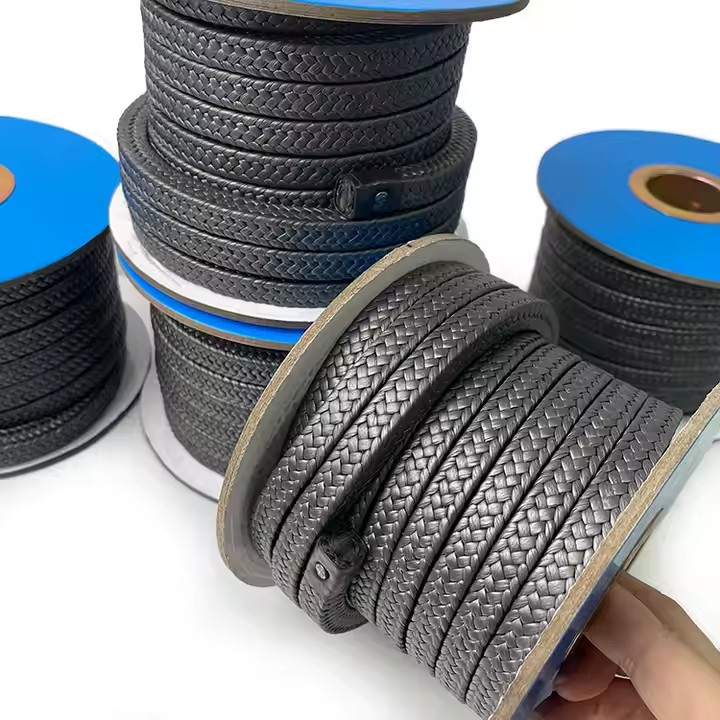Cutting and installing graphite packing rings.
Select the right packing. Then, use cutting tools to cut the packing ring to the required length. If there is no packing cutting machinery, cut it according to the formula L = (shaft diameter d + packing width s) × 1.07 × π. Generally, for rotating shafts, use a 90° straight cut, and for valves, use a 45° cut. Never try to determine the length by wrapping the packing around the stuffing box. Or wrap the packing around a pipe with the same O.D. as the valve stem, press it tightly but do not stretch the packing. Then cut it into a sample ring and check if it can correctly fill the space and ensure there is no gap at the joint. Then use the sample ring as a standard to cut the remaining packing rings. If done on a flat surface, and if the packing is soft or prone to deformation, make a small band using the sample ring. Use the band to make the remaining packing rings.
For valves, the graphite packing ring is a pre-compressed, matching cross-section. For pumps, it leaves a 0.3 mm – 0.6 mm gap, which aids in lubrication and cooling.
Installation:

cut and install graphite packing
Install one packing ring at a time. Ensure it is clean and free of dust or debris. If needed, lubricate the packing rings with the same clean oil you use on the valve stem. Install each packing ring at 90° intervals. Pull the rings axially slowly, and the radial distance should be enough to fit the ring onto the shaft. Use professional packing tools to tighten each packing ring. After adding enough packing rings for the valves, extend the gland into the stuffing box. It should go in by 25% of the packing thickness. For pumps, it should be 50% of the packing thickness. Use the follower to close it. The follower can increase the tightness. The follower is only a supplement. It can ensure the proper position of all packing rings and prevent the packing from moving.
In reciprocating pumps, guide rings should be at both ends and in the middle of the stuffing box. They will keep the plunger concentric and support its weight.
After installing the packing rings, tighten the bolts. Use a wrench or a similar tool to tighten each nut. This helps ensure uniform pressure on all nuts. Note: Now, if the device is in a non-leaking state, it may cause the packing to burn. It is best to slowly tighten the bolts. This should reduce leakage to an acceptable level.
Adjusting graphite packing
(1) For pump packing.
(2) Continue to tighten the gland nut by hand.
(3) After starting the pump, adjust the gland nut, allowing for slightly higher leakage now.
(4) Slowly tighten the gland nut. This will reduce the leakage until it is at an acceptable level.
If the leakage stops suddenly, loosen the gland nut. Then readjust it to keep the packing from overheating.
(5) Adjust the leakage rate to a stable state.
For valve graphite packing.
Contact the packing manufacturer or tech department for the required torque or compression. Tighten the gland nut according to the following steps:
(1) Apply torque to the gland nut to 30% of the full torque or the specified compression percentage.
(2) Open and close the valve several times. When the valve is in the closed position, apply full torque.
(3) Repeat step (2) three or four times.
 Hongwo Braided Packing
Hongwo Braided Packing


WhatsApp
Scan the QR Code to start a WhatsApp chat with us.